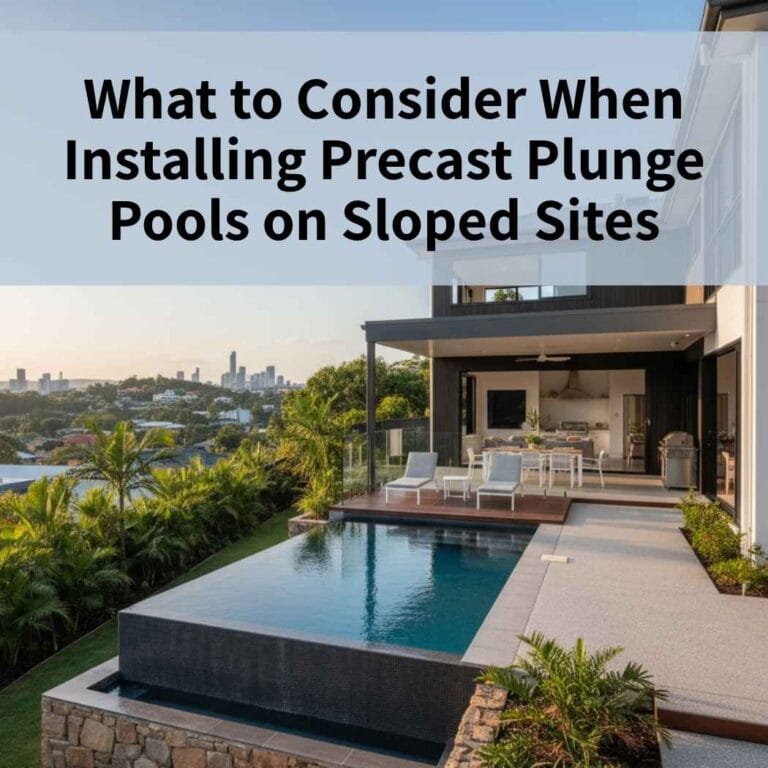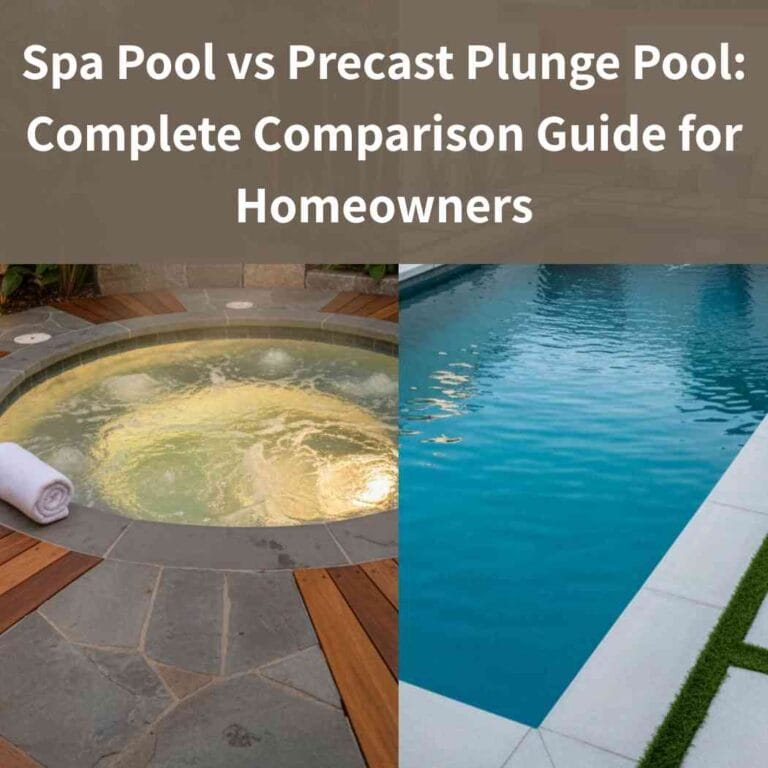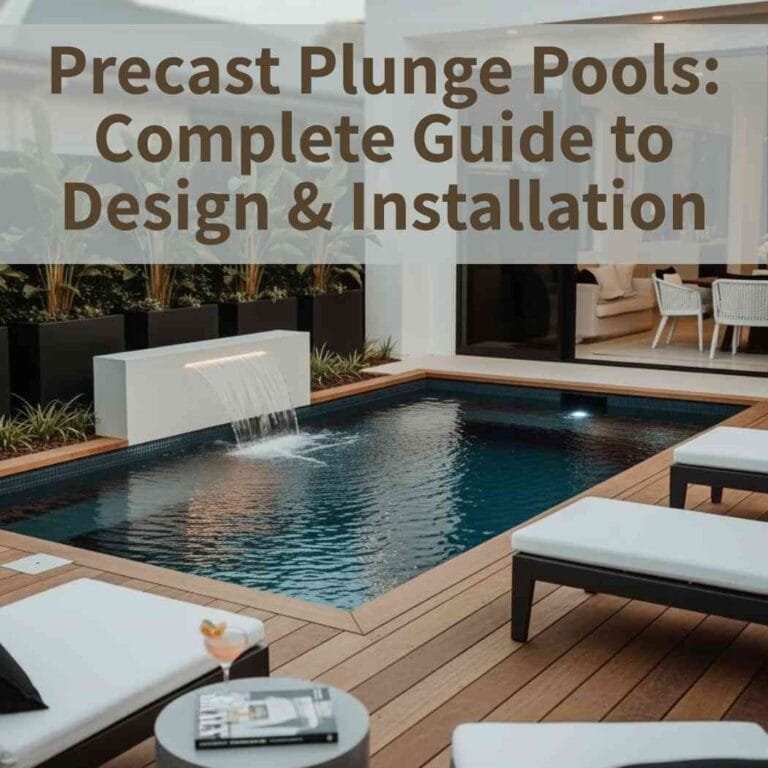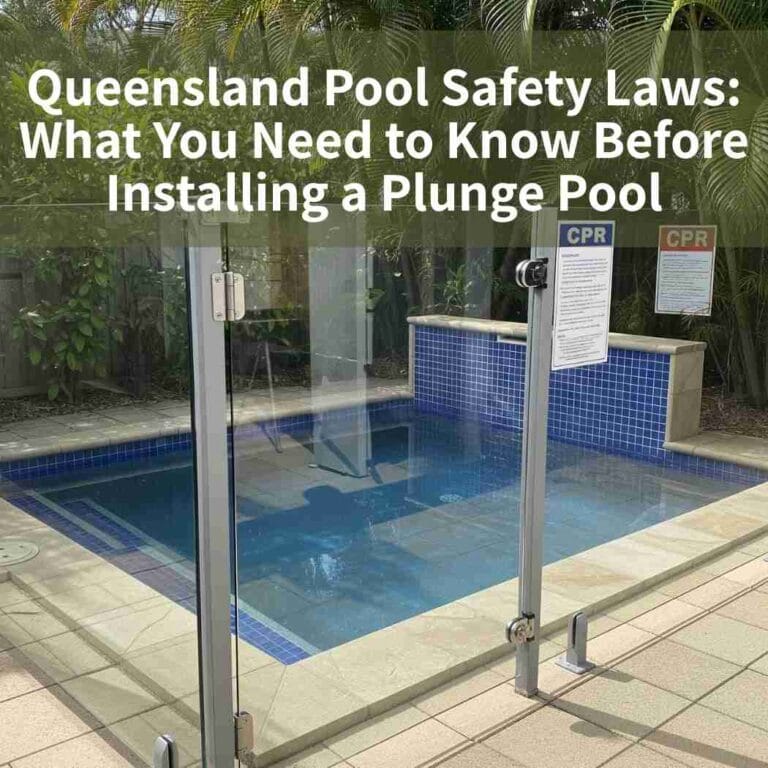Thinking about heating your plunge pool? You’re not alone. Whether it’s for comfort, relaxation, or getting more splash-time through the cooler months, adding heating can turn your plunge pool into a year-round oasis.
At Plunge Pools Brisbane, we specialise in designing custom plunge pools that suit your lifestyle — and that includes smart heating solutions. Whether you’re building new or upgrading an existing pool, our team can help you plan ahead, install the right system, and make sure your pool is warm, efficient, and ready to enjoy all year round.
In this guide, we’ll walk you through the smartest ways to heat your plunge pool — keeping things simple, cost-effective, and energy-efficient. Ready to turn your pool into a year-round retreat? Let’s dive in!
Table of Contents
ToggleWhy You Might Want to Heat Your Plunge Pool Year-Round
So, you’ve got a plunge pool — nice one! They’re great for relaxing, cooling down, and even a quick workout. But once winter rolls in or the evenings get a bit chilly, that pool can turn into an ice bath.
That’s where heating comes in.
Stay warm, swim longer
A warm plunge pool isn’t just about comfort. It’s also perfect for soaking sore muscles, relaxing after work, or enjoying an early morning dip — no matter the season.
Small pool, big decisions
Because plunge pools are smaller than regular swimming pools, they don’t need as much energy to heat up. That’s good news for your power bill — but it still means picking the right heating system.
Real talk from a pool pro
A lot of people ask us: “Can I add heating later?” Technically, yes — but only if your pool was set up for it. We always recommend installing a second set of pipes during the build. That way, you’re future-ready. No digging up concrete later. Easy as.
Comparing Your Plunge Pool Heating Options
There are a few smart ways to heat the pool. Some are better for certain seasons, budgets, or energy types. Let’s break them down so you know what’s what.
1. Solar Pool Heating
How it works:
You’ve probably seen black pipes or panels on rooftops. These soak up heat from the sun. Pool water gets pumped through them, warms up, and then flows back into your pool. Pretty clever, right?
Pros:
- Free to run once it’s set up
- Great for the planet
- Works well during sunny seasons
Cons:
- Doesn’t work at night or on cloudy days
- Usually only extends the swimming season, not great for year-round warmth
2. Heat Pumps (Especially Inverter Models)
Why they’re a top pick for plunge pools:
Heat pumps are like air conditioners but for your pool. They pull warmth from the air, even when it’s cool outside, and use it to heat the water. Inverter heat pumps are super smart — they adjust how hard they work to save power.
Pros:
- Can keep your pool warm all year
- Quiet and energy-efficient
- Perfect for pairing with solar panels
Cons:
- Costs more to buy upfront
- Takes longer to heat than gas, so plan ahead for your swims
3. Gas Pool Heaters
How they work:
Gas heaters burn natural gas or LPG to heat up your water fast. They’re popular for spas or for people who want to swim on the fly.
Pros:
- Heats water super quickly
- Works no matter the weather
- Great if you don’t swim every day
Cons:
- Expensive to run
- Can be noisy
- Shorter lifespan compared to other options
4. Pool Covers (Not a Heater — But a Must-Have!)
Why they matter:
Even the best heater will lose heat if the pool isn’t covered. A simple pool cover or solar blanket can help retain the heat and stop water from evaporating.
Pros:
- Keeps the pool warmer overnight
- Can save up to 50% on heating costs
- Helps stop leaves and dirt too
Cons:
- You have to remember to put it on and take it off

Pro Installation Tips: Pre-Planning Your Heating the Smart Way
Alright, here’s a tip that can save you a lot of money, time, and stress later on:
If you’re building a plunge pool, plan for heating upfront — even if you’re not ready to install the heater yet.
It’s all about the second circuit
When we build a pool, we always recommend adding a second circuit. That’s just a fancy name for an extra set of pipes.
Here’s how it works:
- One set of pipes goes to the filter to keep your pool clean.
- The second set is for your future heater — even if you don’t install one straight away.
If you don’t put those extra pipes in while building, adding a heater later means digging up concrete or connecting it to the filter circuit (which isn’t ideal). Trust us — future-you will thank you.
“I don’t want heating yet” — That’s okay!
Even if you’re not installing a heater now, the second circuit can just sit there, quietly waiting until you’re ready. It doesn’t affect your pool and doesn’t wear out.
When the day comes to heat things up, all you’ll need is:
- The heater unit
- A quick connection to the pre-installed pipes
- And voilà — warm pool, easy install!
No regrets, just smart planning
This is one of those “wish I knew that earlier” moments for many pool owners. So if you’re still in the design or planning phase, ask your pool builder about adding a heating circuit now.
Choosing the Right Heating System for Your Needs
So, what’s the best way to heat your plunge pool? Well… it depends. Everyone’s a bit different. Let’s walk through a few things to help you decide.
Are you a year-round swimmer or just a warm-weather dipper?
- Seasonal swimmer?
A solar heater or solar cover might be enough to stretch your swim time by a few extra months — without breaking the bank. - Want to swim every season?
A heat pump is your best mate. It keeps things toasty all year and is cheaper to run long-term than gas.
Where do you live?
- Sunny and warm most of the year?
Solar heating system will work great (but only while the sun’s out). Add a pool cover to help trap that heat overnight. - Cooler area or chilly winters?
Go for a heat pump — it still works when the air is cooler, especially if it’s an inverter model.
What’s your budget?
- Tight budget upfront?
A solar pool cover is cheap and simple. It won’t heat your pool like a machine, but it helps hold warmth in and cut water loss. - Thinking long-term?
Invest in a heat pump, especially one with inverter tech. It costs more to buy, but saves heaps on running costs and lasts longer. - Need fast heat for occasional use?
Consider a gas heater — great for spas or sudden swims, but be ready for higher bills.
Want to be eco-friendly?
- Team up a solar panel system with a heat pump.
Use the sun to power your heater — smart and sustainable!
No matter what you choose, don’t forget a good pool cover. It makes any heater work better by keeping the heat in and cutting energy use by up to 50%. Plus, it keeps leaves and dirt out — bonus!
Final Thoughts
Whether you want to enjoy a quiet winter soak, ease muscle tension, or just keep the kids happy no matter the weather, the right heating system makes it possible.
The key is choosing a solution that suits your lifestyle, location, and budget — and if you’re still building, don’t forget to plan ahead with a second circuit. Trust us, future-you will thank you!
From solar and heat pumps to gas and covers, there’s an option for everyone. And remember, you don’t have to do it all at once. Just having the right setup ready can give you the flexibility to upgrade when the time is right.
Frequently Asked Questions
1. What is the most efficient way to heat a plunge pool?
The most efficient way is using an inverter heat pump, especially when paired with solar panels. It gives you year-round warmth with lower running costs.
2. Can you use solar to heat a plunge pool?
Yes! You can use solar pool heating systems, or even better — use solar panels to power an electric heat pump. That way, you still get warm water even when it’s not sunny.
3. Is a heat pump better than gas for a small plunge pool?
For most people, yes. A heat pump is quieter, cheaper to run, and more eco-friendly. Gas heats up faster but costs more over time.
4. Can I install a heater later if I don’t do it upfront?
Only if you planned ahead! If you install a second circuit during the build, adding a heater later is super easy. Without it, it’s tricky and costly.
5. Do I really need a pool cover if I install a heater?
Absolutely. A pool cover helps keep the warmth in, stops water from evaporating, and can save you up to 50% on heating costs. It’s a no-brainer.




